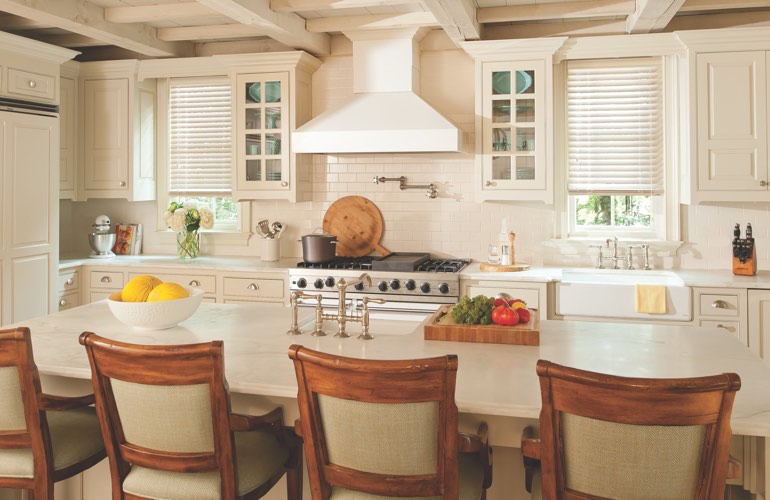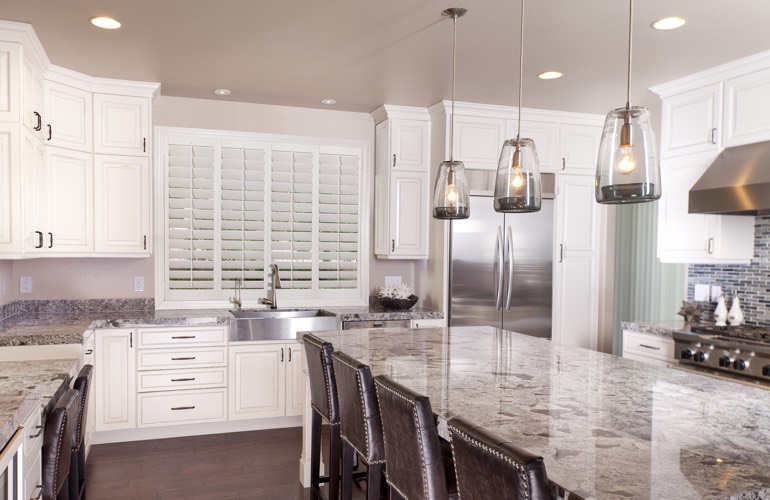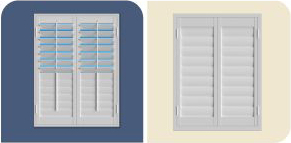
Why Some Homeowners In Austin Mistake Plantation Blinds For Plantation Shutters
When Austin homeowners ask us for a quote, they may mistakenly ask for plantation blinds. They don’t realize that plantation blinds is the wrong term for the window treatment they have in mind.
What most people refer to as “plantation blinds” are actually plantation shutters.
Interior shutters are synonymous with the term “plantation”not blinds. And “plantation” describes the size and style of the horizontal louvers.
Blinds have thin horizontal slats that are usually called slats. But these slats are not thick enough or wide enough to pass for “plantation” style.
Even some blind companies call blinds “plantation,” when that word has been associated with custom interior shutters. Plantation shutters can look like blinds at a glance. But these two window treatments differ in numerous ways.
How Plantation Shutters Differ From Blinds


Plantation Shutters Are More Durable Than Blinds
Premium plantation shutters can be manufactured from reclaimed wood, synthetic wood, or hardwood. Any of these materials make for a sturdy window treatment that outlasts blinds by decades. And when you order shutters with UV stabilizer-infused paint, your plantation shutters never lose their original color.
In contrast to shutters, blinds have a series of cords that hold the slats up. And most have a wand to move the slats. These two elements, in addition to the thin slats, are susceptible to breaking.
Blinds are also not effective at giving you control over light and temperature. And they can yellow after years in the sun, unlike quality shutters.
They’re Highly Energy Efficient
The material a window treatment is made from greatly affects its energy efficiency. Plantation shutters, with their synthetic wood and wood louvers, are known to be the most energy-efficient window treatment in Austin. And it’s Polywood®’s exclusive weatherstripping that’s engineered to help seal off airflow. That’s how Polywood insulates 1600% better than an aluminum blind.
When you close a blind, the slats aren’t tight against each other. There’s space on both sides of the blind where air can flow. And there are holes where the cords are. These issues make blinds less energy efficient compared to quality plantation shutters.
They Highlight The Shape Of Your Window
Another thing to think about is that a rectangle is the only shape blinds are available in. And if your window are circular, arched, triangular, or octagonal, blinds will cover up the shape rather than show it off.
Plantation shutters on the other hand are ideal for specialty-shaped windows. They are custom built to account for every corner, arch, and angle. The finished shutters is a functional window treatment that looks stunning and makes the window shape pop.
They Give Your House A Custom Look
You can order blinds in a selection of colors, textures, and finishes. They can even be motorized and cordless. But however you mix and match their options, blinds don’t look as custom as shutters do.
Plantation shutters in Austin come in Polywood, Ovation® wood, and reclaimed wood. And there’s more than 300,000 combinations of custom options of these window treatments to match your décor.
Usually, shutters are mounted with a frame that accentuates the corners of the window and highlights the shutter panels. The plantation shutters make a fashion statement that wows. And as a permanent feature of your home, they adds to its appraisal value.
An example of an exceptional idea for custom window treatments is to have the shutters made from reclaimed wood. No two shutter panels - no two shutter louvers - have identical marks, holes, or colors. It’s the ultimate custom window treatment you can find in the Austin area.


